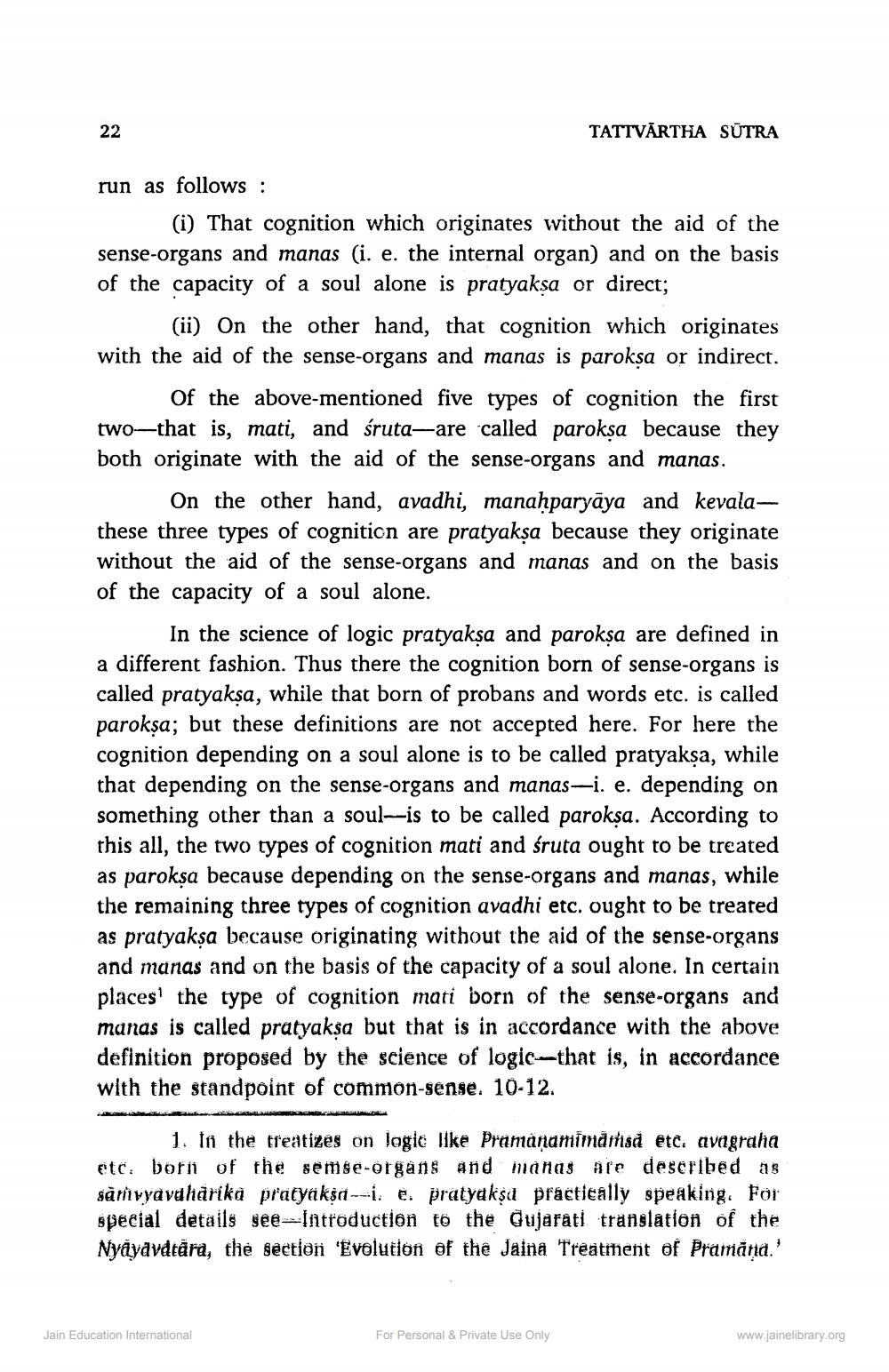________________
TATTVĀRTHA SŪTRA
run as follows :
(i) That cognition which originates without the aid of the sense-organs and manas (i. e. the internal organ) and on the basis of the capacity of a soul alone is pratyaksa or direct;
(ii) On the other hand, that cognition which originates with the aid of the sense-organs and manas is paroksa or indirect.
Of the above-mentioned five types of cognition the first two-that is, mati, and śruta—are called paroksa because they both originate with the aid of the sense-organs and manas.
On the other hand, avadhi, manahparyāya and kevalathese three types of cognition are pratyaksa because they originate without the aid of the sense-organs and manas and on the basis of the capacity of a soul alone.
In the science of logic pratyaksa and paroksa are defined in a different fashion. Thus there the cognition born of sense-organs is called pratyakşa, while that born of probans and words etc. is called parokşa; but these definitions are not accepted here. For here the cognition depending on a soul alone is to be called pratyakşa, while that depending on the sense-organs and manas-i. e. depending on something other than a soul-is to be called parokşa. According to this all, the two types of cognition mati and śruta ought to be treated as paroksa because depending on the sense-organs and manas, while the remaining three types of cognition avadhi etc. ought to be treated as pratyaksa because originating without the aid of the sense-organs and manas and on the basis of the capacity of a soul alone. In certain places the type of cognition mati born of the sense-organs and manas is called pratyaksa but that is in accordance with the above definition proposed by the science of logic-that is, in accordance with the standpoint of common sense. 10-12
1. In the treatizes on logie like Pramanamimansd etc. avagraha etc. born of the semse-organs and manas are described as säravyavdharika pratyaksa--. e: pratyakşd practically speaking. For special details ge@ Introduction to the Gujarati translation of the Nyayavdtāra, the section 'Evolution of the Jaina Treatment of Pramāna.'
Jain Education International
For Personal & Private Use Only
www.jainelibrary.org




